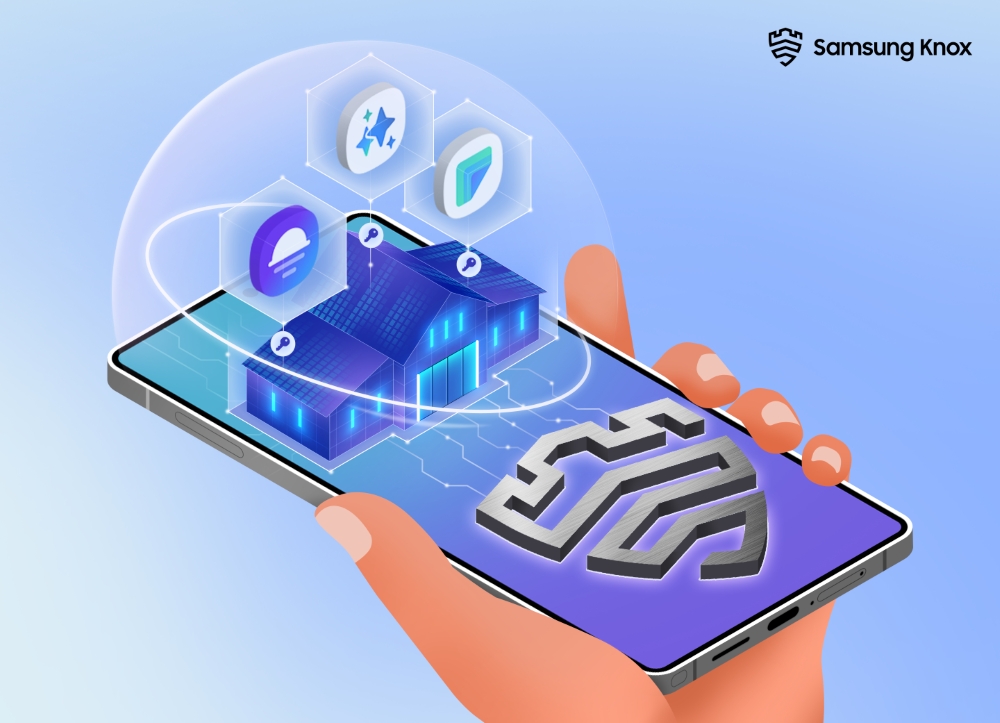
Samsung has announced a new suite of privacy and security updates set to launch with its upcoming Galaxy smartphones running One UI 8.
These enhancements are designed to strengthen protection for on-device AI features, expand threat detection across the Galaxy ecosystem, and introduce network encryption capable of resisting future quantum computing threats, said the company.
Key Security Enhancements in One UI 8
1. KEEP: New Encrypted Storage System for AI Features
A new feature called Knox Enhanced Encrypted Protection (KEEP) has been developed to secure data used by on-device AI. It works by creating app-specific encrypted zones within the secure storage area, so each app can only access its own private data.
KEEP supports the Galaxy Personal Data Engine (PDE), which powers AI-based functions such as Now Brief and Smart Gallery search. These features rely on personal information like user preferences and daily routines — all of which remain on the device. This local data is further secured by Samsung’s Knox Vault, a hardware-based security zone that isolates sensitive information.
KEEP is also designed to scale with future AI tools, offering protection for any new on-device AI features that depend on user-specific inputs. Samsung says this makes privacy an integrated system component, rather than just a toggle in settings.
2. Cross-Device Threat Prevention with Knox Matrix
Knox Matrix is being updated by Samsung to provide more robust protection across the Galaxy device ecosystem. If one device is compromised — for example, through system-level tampering or unauthorized identity use — it will be signed out of the Samsung Account, cutting off access to cloud services that might otherwise be affected.
Users are notified across all their Galaxy devices and redirected to a security status page to assess and respond to the risk. Devices that haven’t yet installed the latest security patches can still display warning messages to allow early action before vulnerabilities are exploited.
This update aims to make ecosystem-wide protection more dynamic and responsive while giving users clearer control and awareness.
3. Post-Quantum Cryptography for Secure Wi-Fi
To improve security, Samsung is integrating post-quantum encryption into Secure Wi-Fi. Initially launched with the Galaxy S25 series, this approach uses advanced cryptography to strengthen the key exchange process — a core component of encrypted network communication.
The goal is to defend against future threats where attackers might capture encrypted data today and decrypt it later using quantum computing — a tactic sometimes referred to as “harvest now, decrypt later.”
Secure Wi-Fi’s upgrade includes several new privacy tools:
- Auto Protect activates encryption automatically when connecting to public networks like those in cafés or airports.
- Enhanced Privacy Protection (EPP) routes internet traffic through multiple secure layers to obscure device information and reduce traceability.
- Protection Activity logs show which networks and apps were secured and how much data was encrypted.
4. Core Security Tools and Privacy Controls
Built-in safeguards on the Galaxy platform are receiving additional reinforcement from Samsung.
- Knox Vault stores critical information such as PINs, passwords, and biometric data in a separate hardware zone to keep them safe even if the OS is compromised.
- Auto Blocker prevents unverified apps from installing, blocks harmful commands, and reduces exposure to zero-click attacks.
- Advanced Intelligence Settings allow users to turn off cloud-based AI data processing and keep their information strictly on-device.
- Enhanced Theft Protection helps prevent unauthorized access in case of device theft, using features like identity verification and timed access delays.
Samsung remains focused on delivering safeguards that are built in, always on, and ready for what’s next
said the company said.
Availability
These security and privacy features will begin rolling out with Samsung’s upcoming Galaxy smartphones running One UI 8.
